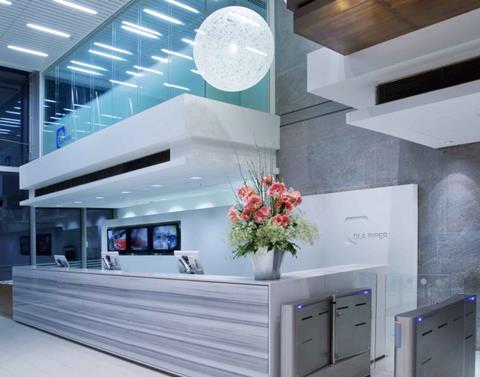
Employee Benefits Connect 2018: Global law firm DLA Piper is developing a collaborative feedback performance management approach in order to increase staff engagement and unlock workplace potential.
Speaking as part of the performance conference stream at Employee Benefits Connect 2018 on Wednesday 28 February, Jean Slater-Romp, head of compensation and benefits at DLA Piper, and Michelle Mason, head of HR, practice groups at DLA Piper, explained how thought leadership from sources such as business consultant Marcus Buckingham is inspiring the law firm’s HR function to adopt a collaborative strengths-based approach as part of the performance lifecycle for its senior staff. This is based on the idea that regular performance and career conversations have a positive impact on individual and team engagement.
In relation to using strengths-based development for promotion processes, this approach helps employees to reinforce their own ideas on what their personal strengths are, and highlights whether staff are actually utilising these skills in their day-to-day role, noted Mason. “So we’ve started using that the last couple of years with our senior manager level. What it has done is reinforce the fact that [employees] know [their] top five strengths, but [they’re] not using them to the best of [their] ability. So what we’ve found is that when we’ve actually put people through this strengths-based [approach], as a follow-up activity in their development support with their next role, they’ve really unlocked some of their strengths and they are using them in a powerful way, and I think that’s the beauty of the piece,” Mason explained.
Starting changes in performance management processes at a senior level is also not an accident. Of the organisation’s 5,000 employees, 700 are partners and it is these partners that DLA Piper wants to rolemodel collaborative feedback for the rest of the business in order to create lasting change. Mason said: “Authentic leadership and rolemodelling. Why am I talking about that? We are actually starting with our partners and we are working very closely with them this year to actually get them to think about what the future of performance might look like for them. So we are investing in some new technology, but that technology is really simple and it’s all about the importance of collaboration, and sharing and knowledge sharing. It’s a very simple tool, but it’s being chaired by the top. Why are we starting with the top? They are the owners of our business and if we can influence at a partner level, we can start to change the way we want to do things.”
Other changes that DLA Piper has made includes introducing individual category ratings into the performance review process for some of its workforce population, rather than having an overall rating. This is because Slater-Romp and Mason’s research, which studied ratings processes at organisations such as Google and Netflix, suggested that having an overall rating system does not always drive the behaviours that the organisation wishes to encourage in employees.
DLA Piper is challenging its performance management processes in order to stay ahead of potential business disruptors as well as to embrace HR innovations. “It’s so difficult to stay current, and as HR professionals we’ve got to constantly adapt to that change as well as doing our day job, so it can be really hard,” Mason added. Also, feedback from staff stated that the performance review process was too time-consuming, hence why DLA Piper has invested in cloud technology.
Slater-Romp and Mason also discussed how today’s disruptive workplace environment is having a knock-on effect on performance management for all businesses. For example, new job roles, such as those around cyber information and security, will require new skill sets and performance metrics, so organisations are going to have to learn how to measure and reward these new jobs in terms of performance management. Furthermore, the duo noted that different industries and sectors will be impacted by different disruptors, so it is important for employers to be agile in their thinking. One way this can be done is for HR professionals to consider what factors or situations could be keeping their chief executive officer up at night.
“Be conscious that there’s so much disruption going on. Sometimes we don’t know it’s coming. Be a bit more agile in your thinking, be open to new ideas and become curious. I think that’s the key takeaway for me.”











